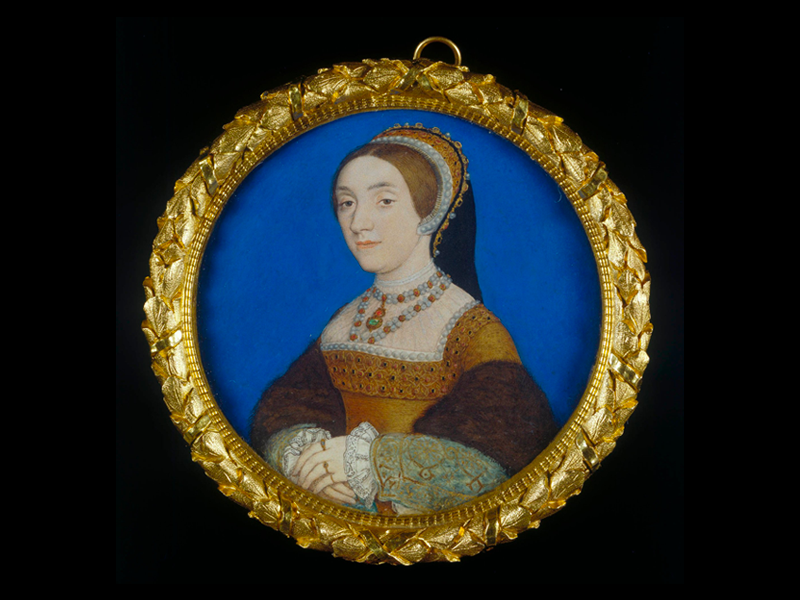

The most likely candidate for a portrait of Catherine due to the jewelry lining up with the jewelry also worn by Jane Seymour and Catherine Parr.
In November of 1541, Mary Lascelles, the former nursemaid of the Howard household, confessed to her brother about Catherine's prior relationships, which he then took to the Archbishop of Canterbury who then took the information to the King. Before Catherine was even aware she was under suspicion, Mary Lascelles, Henry Mannox, and Francis Dereham were all questioned about their involvement. Then, Catherine was finally informed of the allegations, and was questioned by archbishop Cranmer.
Though Catherine had denied the allegations initially, however Cranmer falsely promised her that Henry would be merciful if she confessed, and so she gave the full account, confessing to her relationships with both Mannox and Dereham and that she was not a virgin when she married Henry. As soon as Cranmer left, Catherine changed her story to say that Dereham had raped her in order to try to save herself. During this time, she was not questioned about Culpeper since her involvement with him was still unknown, however she did mention Culpeper briefly in her confession in reference to their brief courtship before her marriage to Henry. This led them to investigate that direction, and the truth about their nighttime rendezvous came out. As such, the situation suddenly turned from one of a pre-contract to one of infidelity to the king.
Catherine was stripped of her title and sent to a convent to wait out her time until her sentence was announced. Francis Dereham and his friend Robert Damport underwent heinous torture to extract further information from them. On December 10th, 1541, both Thomas Culpeper and Francis Dereham were executed, with Culpeper receiving a simple beheading thanks to his class status while Dereham was hanged, drawn, and quartered. Catherine and Lady Rochford were both sentenced to death a month later, and taken to the Tower of London in February. On her way to the tower, she would have passed under London Bridge where both Culpeper and Dereham's heads were impaled on spikes. It is unknown if she saw them there, but if she did she gave no comment. When she arrived at the tower, she asked if she could see the execution block, and then spent some time placing her head on the block in practice. Though her exact motivations are unknown, she was likely nervous about a botched execution such as the one Lady Salisbury had received during the time Catherine had been queen.
On February 13th, 1542, Catherine was beheaded at the tower. Though there is a legend that circulates that her last words stated that she wished she had married Culpeper, she said nothing of the sort. Instead she just spoke of Christ and redemption. She would have likely been 19 or 20 at the time of her death. Lady Rochford followed and was executed shortly after. Their bodies were taken across the street to the Chapel St. Peter-ad-vincula and buried beneath the altar next to Catherine's cousin and Lady Rochford's sister in law, Anne Boleyn.
